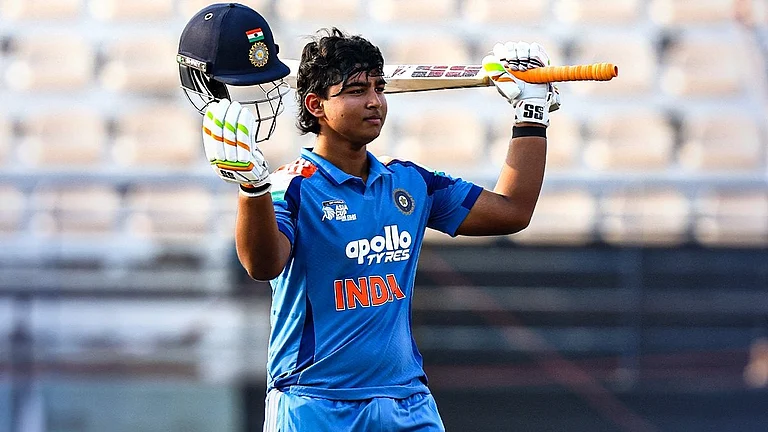The idea that good nutrition must become a people’s movement (a Jan Andolan) was not just to combat malnutrition among mothers and children, but also enable communities to utilize health, nutrition, and hygiene services, and adopting healthy behaviors.
The Prime Minister’s Overarching Scheme for Holistic Nutrition (POSHAN) Abhiyaan was thus launched in March 2018, with targets specific to preventing and reducing stunting and wasting, anemia and building a foundation for a healthy and nutritious India. It was a seminal point in addressing malnutrition holistically. The scope of the Abhiyaan is extensive, ranging from technology driven solutions to service delivery and capacity building to decentralized social and behaviour change strategies.
Implementation of the POSHAN Abhiyaan has been anchored through the Department of Women and Child Development, specifically the Integrated Child Development Scheme (ICDS), channeling most of the work through the anganwadi centers. ICDS is seen as one of the world's largest community-based programs for early childhood development which covers children between 0-6 years, pregnant and lactating mothers for health and nutrition support. Other specific coverage areas include reduction in mortality, early childhood education, foundation for psychological, physical and social development of the child and improving maternal education.
Over the last 40 years from the launch, the ICDS has progressed from 33 (four rural, 18 urban, 11 tribal) blocks to 7,072 projects covering approximately seven percent of the total population today. There are altogether 1.3 million operational anganwadi centers across India. This scheme pans out with a working strength of 2.4 million, of which 1.28 million are anganwadi workers who run the anganwadi centers with the support of helpers and supervision of Lady Supervisors (LS). The Child Development Project Officer (CDPO) is responsible for the organization, admin services and implementation of ICDS and the LS guide anganwadi workers in planning the service delivery. Whereas the job of anganwadi workers are manifold, they are essentially the ‘go-to’ persons for all kinds of health and nutrition related issues in the communities.
ICDS has undergone substantial changes in the past and there are mixed testaments on its impact. An assessment conducted by the National Institute of Public Cooperation and Child Development (NIPCCD) in 2006 has concluded that the program was ‘satisfactory’, whereas a World Bank study in 2005 suggested that “there is little evidence of ICDS program impact on overall child nutrition status.” There are other studies which discuss the potential for improving optimal utilization of services given the wide coverage by ICDS (2013) and the improvement in the quality of services to get the anticipated results (2015).
As the government decided to adopt a nationwide lockdown as an effort to control the spread of COVID-19 virus, anganwadi centers were one of the first institutions to be shut. The ICDS services continued piecemeal, mostly taking up the supplementary nutrition program (SNP) under which dry rations were distributed for households with children below six years of age and pregnant and nursing mothers. Given the need for social distancing and ban on large gatherings, the Jan Andolan activities - community-based events and mass sensitization activities have not been taking place at anganwadi centers.
This pandemic has caught one of our largest public health and nutrition schemes off-guard in many ways. Evidently, the pre and post Covid-19 scenarios are going to make significant differences in service delivery, as most of the activities which take place under ICDS are mass sensitization based. A large part of work of the anganwadi workers involve community involvement through home visits, community mobilization, and community-based events to create awareness on maternal and child health care practices and nutritional behaviors. A clear guideline on ways to resume service delivery within the realities and restrictions of the pandemic is an utmost requirement when the government is ready to loosen lockdown restrictions.
For a country where almost 36% children are underweight, 50% women are anemic already, a rapid call to action and re-shaping system is a big fish to fry. How do we do it?
Through this article, we propose that central and state governments need to come together to develop contextual guidelines to ensure delivery of key health and nutrition services. This is of utmost importance given that an anganwadi worker is predominantly involved in community engagement through home visits or village level gatherings. Additionally, it would be crucial for ICDS to re-look at how SNP could be explored as a potential opportunity to not just provide supplementary food, but use locally available immunity boosting foods. Several districts are piloting the use of amla and moringa as part of their SNP. These are excellent pilots, which need further attention.
Village Health Sanitation and Nutrition Day (VHSND) is an important event which happens at anganwadi centers across India, every month. The event brings health, nutrition, sanitation and early childhood development services together, gathering multiple stakeholders, for service provision. Growth monitoring, ante and postnatal care and checkups, immunization, group counselling on health, nutrition and sanitation, diseases and family planning measures are conducted during the event. It is a coordinated effort of the anganwadi worker, ASHA and Auxiliary Nurse midwife - the AAA, which is a powerful triad in ensuring comprehensive community level health and nutrition service delivery.
Under the SNP, anganwadi centers are currently providing supplementary nutrition in form of hot cooked meals and take-home ration (THR) - either door-to-door or at anganwadi centers on a rotation basis. The food items provided under SNP mostly consist of the rice/wheat-based products, nutritional mixes, milk products, fruits and eggs, which are provided in varied quantities and frequencies in anganwadi centers all across India. A lot of times, availability of food items in the region determines what to distribute and what to supplement. The anganwadi workers deliver messages to the beneficiaries on the importance of food being provided, their bodily needs while distributing.
This pandemic has been a serious jolt to the system. It is time for a systematic assessment of the food items being distributed at the anganwadi centers, for their nutritional values and making an adjustable introduction of immunity boosting food items. Immunity is largely derived from the nutrient status in the body. Studies have shown that undernutrition, caused from insufficient energy and micronutrient intake impairs an immune function, practically affecting all forms of ‘immunity.’ There should be a classification of food items being distributed in the anganwadi centers, the incorporationof locally available immunity boosting food items and knowledge imparted to the workers and helpers on importance of its regular consumption. Additionally, there should be a decentralised approach to this, so that the states can make their choices based on availability of these local food items.
Another crucial facet of ICDS services is that they are largely community centric, be it mobilization and/or sensitization activities. Anganwadi workers conduct door to door campaigning, conduct CBEs and mass awareness activities on various health, sanitation, hygiene and nutrition habits. While it is now even more important to advocate sanitation and hygiene, newer, or rather smarter ways of behavior change communications should be introduced that minimizes human contact to reduce risk among vulnerable populations like small children and pregnant women. Alternatives like tele-health, audio visual and tech-based communications, which are also proven communication strategies used in Africa during the Ebola crisis should be introduced, looking at the community’s access to resources.
It is time that the government also further empowers the anganwadi helpers and other women networks available in the rural areas, such as the women’s Self-Help Groups as they have access to large groups of people, and are already involved in various entrepreneurial and empowerment activities in the villages. An alliance between AAA and SHGs could be instrumental in achieving better health communications in India, if used right, they can play a role of nutrition catalysts who can be trained to provide integrative nutrition counselling to women in the long run.
POSHAN Abhiyaan nonetheless has been instrumental in combating malnutrition in India. Scopes of improvements can be seen on an efficient implementation of its components which should also result from a better convergence between several departments. The government has to work together with the community, to facilitate dream “malnutrition free India” come true.
(The authors are Program Officers at the Nutrition India Initiative (TINI)-Tata Trusts.)






















